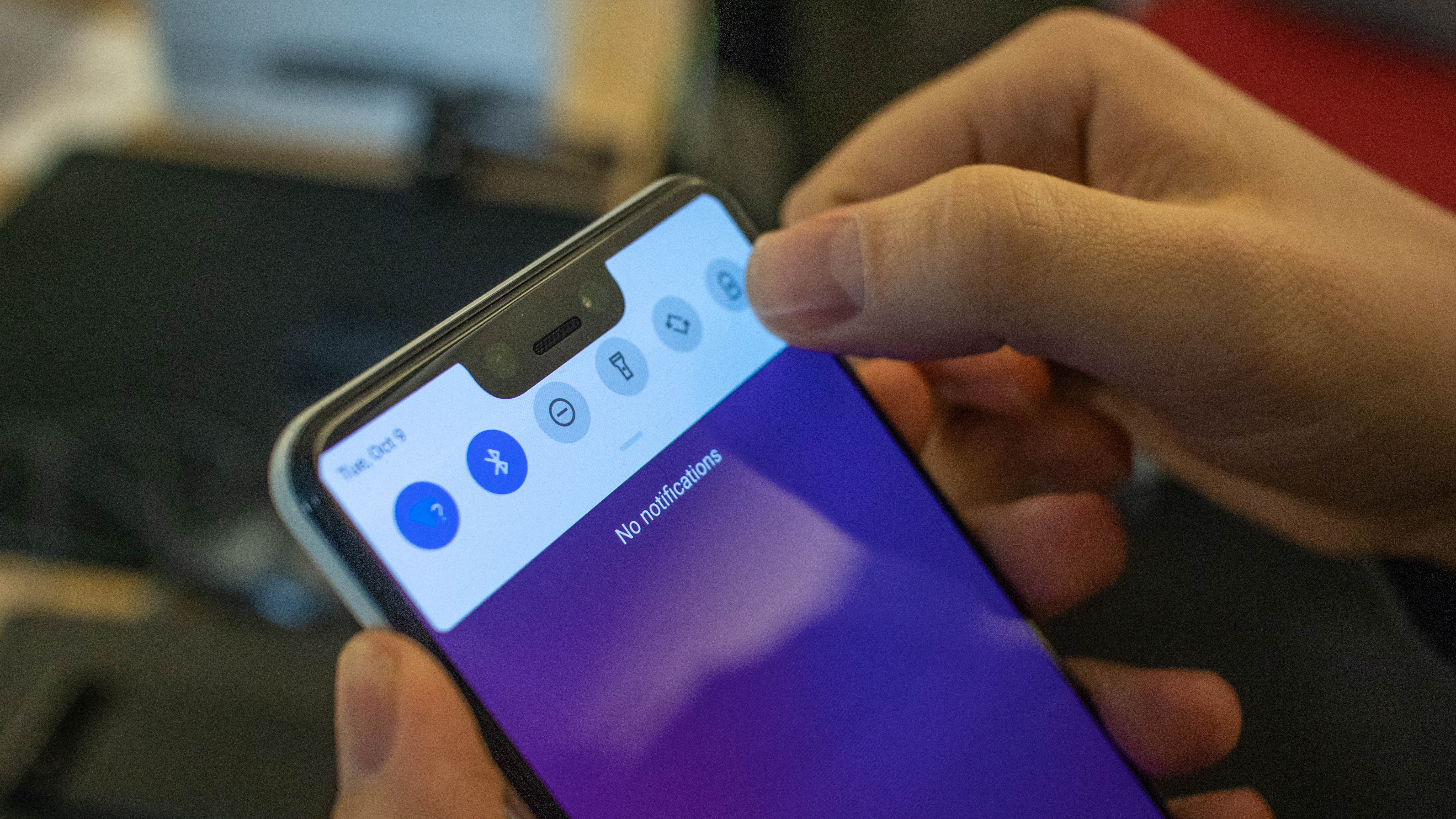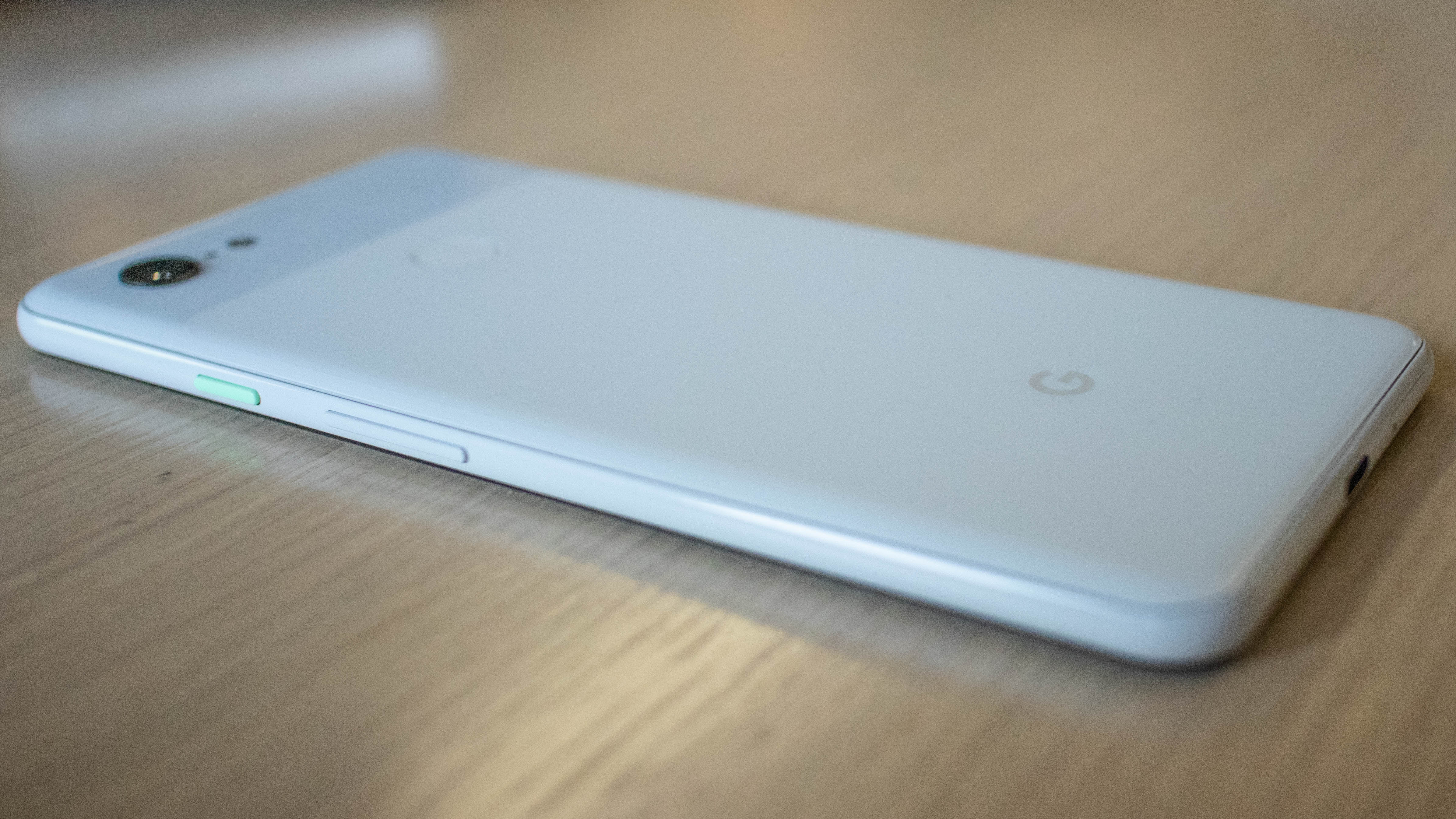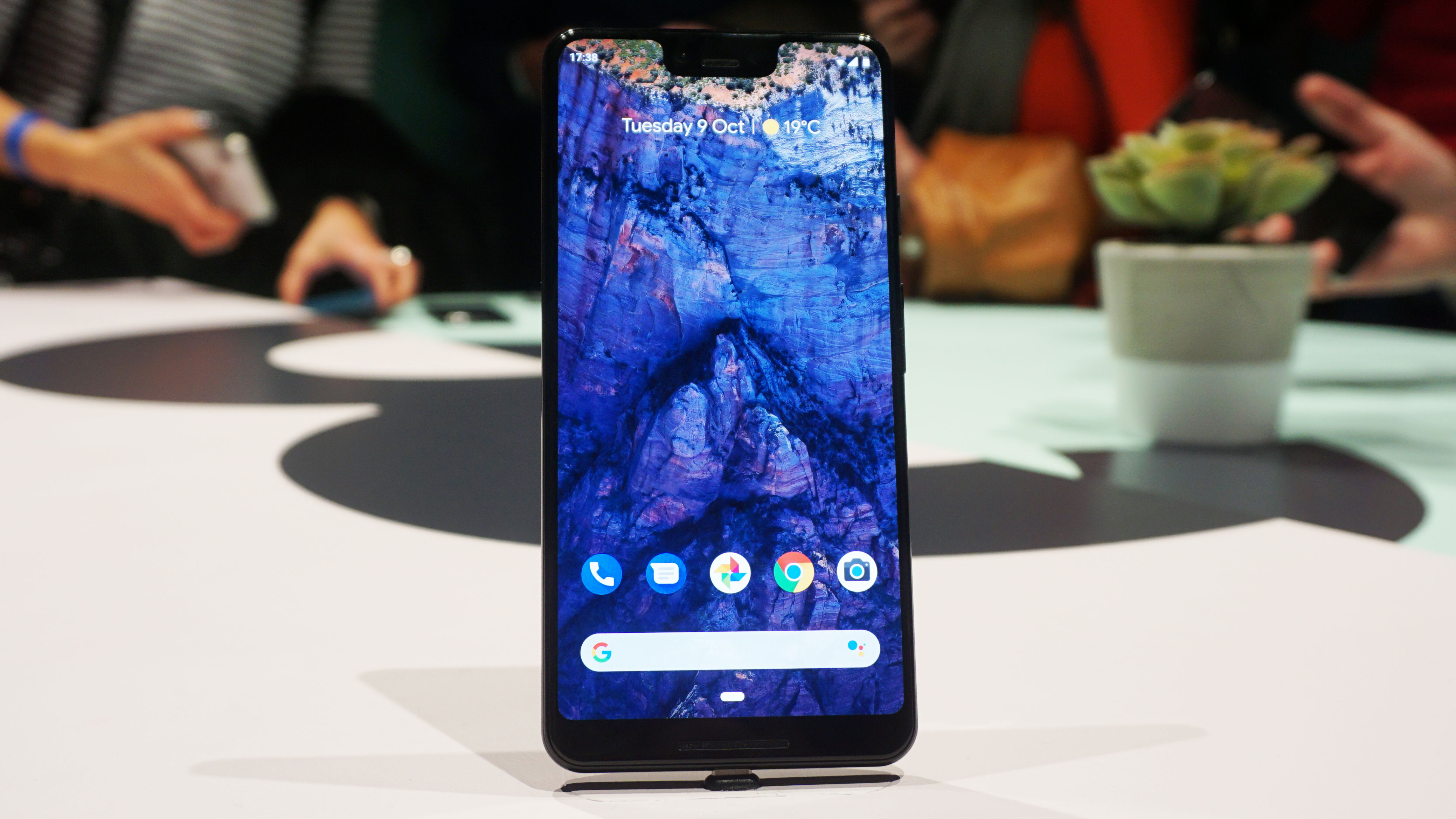TechRadar Verdict
The Google Pixel 3 XL is the best big-screened camera phone you can buy today, one that’s able to capture stunning photos that your friends won’t believe came from a smartphone. You’ll have to be okay with its prominent at the top of the 6.3-inch display and the higher price, a familiar trade-offs for a little extra screen space in 2019. It’s battery life is bigger, too, and the main reason to choose this phone over the otherwise similar 5.5-inch Google Pixel 3.
Pros
- +
Best camera phone we’ve tested
- +
Great 6.3-inch OLED display
- +
Solid battery life
Cons
- -
The notch is hard to ignore
- -
Not one-hand friendly as Pixel 3
- -
No microSD or headphone jack
Why you can trust TechRadar
The Google Pixel 3 XL has one of the best cameras with a sizeable screen, a one-two punch that offers a wide, color-rich display that shoots photos your friends won’t believe came from a smartphone.
While other handsets have been released to steal the crown, like the Samsung Galaxy S10 Plus, the Huawei P30 Pro, and the OnePlus 7 Pro, the Pixel 3 XL arguably remains the best camera phone.
The 12.2MP rear-facing lens is the primary reason to consider this Android Pie-packing handset, and the two front-facing cameras – the extra lens helps for group selfies – are the second and third reasons. Google’s phone holds the lead in picture-taking over everything we’ve tested so far when it comes to sheer usability - point, snap and get a great photo.
It's worth remembering the Pixel 3 XL isn't Google's newest large handset – the affordable Pixel 3a XL came out alongside the Pixel 3a, and the newer flagship Pixel 4 XL came out with the Pixel 4. The latter handsets improve on a few of the features of the Pixel 3 XL, with an extra camera, newer chipset and bigger battery, so it's worth considering if you're looking for a new smartphone.
The Pixel 3 XL has identical cameras, dual front-facing speakers, Snapdragon 845 chipset, and 4GB of RAM as the fits-in-one-hand Google Pixel 3. But the XL version has the edge on its smaller sibling with a bigger 6.3-inch bezel-reduced OLED screen and higher-capacity 3,430mAh battery.
Typically we prefer bigger screens, but the Pixel 3 XL has a hard-to-ignore notch cut out at the top of the display - something not only far more sizeable than that in the Pixel 3 but also far deeper than the iPhone XS Max notch.
That's a design quirk – controversial among Pixel fans – which is meant to offer a little more room for notification icons, the time, and the battery life percentage, in snippets flanking the selfie cameras and speaker housed in a cut-out in the display's top-center.

Weight: 184g
Dimensions: 158 x 76.7 x 7.9mm
OS: Android 9
Screen size: 6.3-inch
Resolution: 1440 x 2960
CPU: Snapdragon 845
RAM: 4GB
Storage: 64/128GB
Battery: 3,430mAh
Rear camera: 12.2MP
Front camera: 8MP + 8MP
It does give you more screen, sure, but not to the extent that the 6.3-inch diagonally measured spec suggests. To us, the 6.3-inch Samsung Galaxy S9 Plus and 6.4-inch Note 9 screens feel a bigger and more immersive, and the forthcoming Samsung Galaxy S10 and Galaxy S10 Plus promise to mainstream the punch hole camera for even more screen real estate.
Google’s design approach is more functional than fashionable, favoring its selfie twin cameras with a bit of asymmetrical screen distraction.
The Google Pixel 3 XL ends up being the best option for people who want photos as flawless as they come on a smartphone, and are already used to a wielding sizable handset. It’s hard to downsize, even if the tighter dimensions of the 5.5-inch Pixel 3 are a better fit for most people.
It doesn’t have everything – there’s no microSD card slot or headphone jack – but if you’re willing to embrace the notch design, you’ll get consistently great photos paired with a fairly big screen.
Google Pixel 3 XL price and availability
The Google Pixel 3 XL release date was October 18, 2018 in the US, and November 1, 2018 in the UK and Australia, and it launched thereafter is Canada, France, Germany, Japan, India, Ireland, Italy, Singapore, Spain, and Taiwan.
At launch, the Google Pixel 3 XL price was $899 (£869, AU$1,349) SIM-free for the 64GB storage variant, and $999 (£969, AU$1,499) for the maxed-out 128GB configuration,
It was a small price hike from the Google Pixel 2 XL by $50 / £70 / AU$50, yet cheaper than the iPhone XS Max by $250 / £230/ AU$450, but it can now be picked up for much less thanks to Pixel 3 XL deals.
The newer Google Pixel 4 XL price is a little cheaper (in most regions) than the Pixel 3 XL launch price, at $899 / £829 / AU$1,279 for the 64GB of storage mode and $999 / £929 / AU$1,429 for 128GB. Of course, the older device has been discounted now though, so it'll remain a more affordable phone.
Design
The Google Pixel 3 XL doesn’t push smartphone design in a revolutionary new direction like the new Huawei View 20, but it does see some satisfying change over last year’s Pixel 2 XL. Gone is the glass-and-aluminum back in favor of an all-glass two-tone look. It’s made of shiny glass at the top and a textured matte glass finish for the lower 80%.
You get a more seamless transition between the two textures with the soft-touch glass back made of the same Corning Gorilla Glass 5 that protects the front screen. There’s an aluminum frame that binds the front and back pieces of glass together – the only bit of metal you’ll see.

The Pixel 3 XL fits into one hand, but takes two hands to operate and it’s a little more slippery to hold than the Pixel 2 XL. The difference isn’t Earth (or phone) shattering, though we did end up preferring the tighter dimensions of the standard Google Pixel 3 for this reason.
The all-glass design has two benefits. First, LTE signals travel more easily through a glass phone than an aluminum-backed smartphone. That’s going to become important as phone makers and carriers try to claim superior 5G speeds in 2019. Second, wireless charging is a part of Google’s hardware ecosystem again, something we haven’t seen since the plastic Nexus 6.
You’ll find smoother corners on the Google Pixel 3 XL – everything has been rounded off and flattened, giving Google’s Material Design software ethos a foothold within real life hardware. The frame edges are polished and the rear fingerprint sensor is flatter.
The smoother design won’t be enough to wow you next to other big phones. This doesn’t have an elegantly curved screen like the Samsung Galaxy Note 9 and the bottom chin stands out next to the iPhone XS Max. Notch or no notch, Google’s design isn’t winning any awards.

But the Pixel 3 XL is more functional: It has two selfie cameras, dual front-facing speakers, and Active Edge, allowing you to squeeze the sides of the frame to trigger Google Assistant. We prefer this over a dedicated AI button, something that annoys us about Samsung and LG’s new phones with dedicated, often-mispressed AI buttons.
Just know that the Pixel 3 XL doesn’t have a standard 3.5mm headphone jack (exactly like the Pixel 2 XL), though it does come with USB-C earbuds in the box this year. You’re also not going to find a microSD card slot anywhere within the design. The 64GB and 128GB internal storage sizes are set in stone once you order them.
There are three muted Pixel 3 XL colors: Clearly White, Just Black and a pinkish Not Pink. We got two reactions from our Clearly White review unit: that it was the most sophisticated hue or that is looked a little cheap and plasticky. Everyone liked the hint of fresh mint color on the power button, a pleasing dab of color that’s exclusive to the Clearly White version.
Screen, notch and bezel
The Google Pixel 3 XL has a sizable 6.3-inch OLED screen with a 18.5:9 aspect ratio, a QHD+ resolution, and HDR Support with true black levels. It’s a higher-quality screen compared to the problematic P-OLED Pixel 2 XL screen we found to be desaturated and leave ghosting burn-in.
There’s also more display here and less bezel, with an 83% screen-to-body ratio (up from 76%), thanks to a 6.3-inch screen (up from 6 inches). The bigger screen fits in basically the same dimensions of 158 x 76.7 x 7.9mm. That’s some nice progress from the engineers at Google.

It’s two steps forward and one step back when you see the notch cut out at the top, however. No one we talked to liked it. A few people said they didn’t mind it too much. That’s as positive as things got. For us, when testing it day-to-day, we found it harder to ignore the deep notch when browsing websites and watching videos. It’s not as easy to overlook as the iPhone X notch.
But wait, we found some software tricks to fix this issue: Google’s hidden developer tools menu offers the ability to hide the notch, though the notification icons, time, and battery life percentage are pushed further down. A third-party app, Nacho Notch, is better. It puts all of that information within the blackened notch space. Why this isn’t a part of the phone by default is perplexing.
The notch cut out shouldn’t be a dealbreaker if you want the best-in-class Pixel 3 camera and desire your phone at the biggest size possible. The software tricks certainly help.

